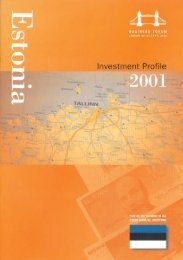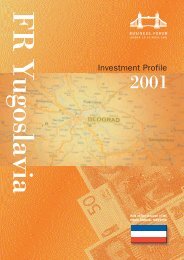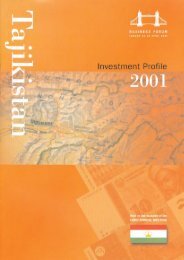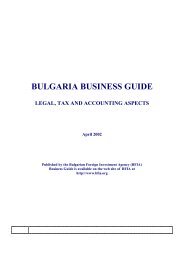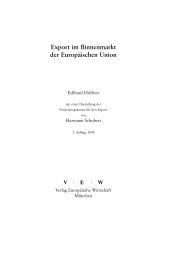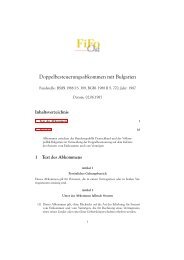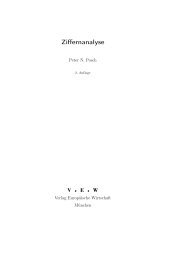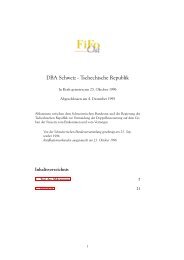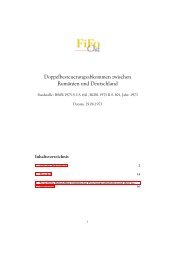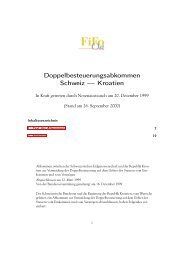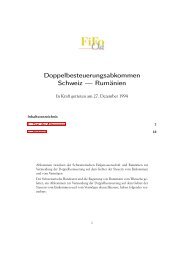Introduction - FiFo Ost
Introduction - FiFo Ost
Introduction - FiFo Ost
You also want an ePaper? Increase the reach of your titles
YUMPU automatically turns print PDFs into web optimized ePapers that Google loves.
Energy<br />
Reform of the integrated electric power monopoly has made<br />
progress in 2000. The new government plans to accelerate<br />
market liberalisation of the electricity sector including the<br />
privatisation of Hrvatska Elektropriveda (Croatian Energy, or<br />
HEP). It is developing a new energy law defining the company's<br />
restructuring and privatisation plan. The bill proposes the<br />
unbundling of HEP's main activities by creating three separate<br />
divisions: transmission, generation, and regional distribution.<br />
Following thorough restructuring, the privatisation process is<br />
not likely to start before 2002, although, some power stations<br />
might be sold sooner.<br />
The planned restructuring is designed to resolve internal<br />
problems such as overstaffing, technical losses in<br />
transmission and commercial losses resulting from clients'<br />
failure to pay. The government's commitment to energy sector<br />
liberalisation was also shown by an increase in electricity<br />
prices in October 2000 to more realistic rates, shifting some<br />
of the cost burden from industry, and the state budget, to the<br />
public.<br />
Since the beginning of 2000, when HEP stopped utilising<br />
electric power from the Krsko nuclear plant in neighbouring<br />
Slovenia, where Croatia has a 50 per cent stake, hydroelectric<br />
power has accounted for around 60 per cent of HEP's<br />
generation capacity. Hydroelectric plants are located primarily<br />
along the Adriatic coastline (Senj, Obrovac, Zakucac), and near<br />
the Slovenian-Hungarian border (Varazdin). Croatia also has<br />
three oil-fired plants (Zagreb, Sisak, and Urinj) and several<br />
smaller gas and coal-fired plants that account for about<br />
40 per cent of the country's total electricity generation.<br />
Oil and gas<br />
The principal player in the oil and gas sector is INA, an<br />
integrated state-owned company that covers a whole series of<br />
activities. It has a monopoly in gas distribution, operates the<br />
country's two largest refineries at Rijeka and Sisak and<br />
conducts exploration activities in Croatia as well as abroad.<br />
Around two-thirds of the country's crude oil consumption<br />
comes from fields operated by INA, in Angola, Egypt and<br />
Russia. INA also supplies around one-third of Croatia's gas<br />
consumption, the balance being imported from Russia. New<br />
offshore gas fields are being developed with ENI of Italy,<br />
through a joint venture. A new field off the coast of Istria<br />
entered production in 1999 and will initially supply gas via Italy<br />
through a new pipeline. INA also has a 38 per cent stake in<br />
Major sectors of the economy<br />
the Adriatic oil pipeline known as Janaf, which runs from the<br />
oil terminal at Omisalj on the island of Krk and is linked to<br />
pipeline networks in Hungary and Slovakia. INA also runs a<br />
network of around 400 petrol stations.<br />
In 2000, the government revealed plans to privatise INA in<br />
2002. However, the choice of method of restructuring and selloff<br />
is still under debate and the final structure is likely to be<br />
decided in late 2001.<br />
INA has a policy of co-operating with other oil companies in the<br />
region, such as MOL (Hungary), Energopetrol (Romania) and<br />
OMV (Austria). Merger plans with MOL, the largest Hungarian<br />
oil and gas company, were negotiated in 1999, but were taken<br />
off the agenda, though INA's management has stressed that a<br />
partnership between the two firms would be desirable in the<br />
long run. (MOL has been expanding northwards instead,<br />
acquiring a stake in Slovakia's largest oil company, Slovnaft.)<br />
INA also has strong potential to act as a major export player<br />
in the states of the former Yugoslavia, which used to be the<br />
company's natural markets. It started regaining ground as<br />
soon as the situation in the region began to normalise. The<br />
company's Sisak oil refinery began delivering oil products to<br />
buyers in neighbouring Yugoslavia in October 2000, only a few<br />
weeks after the international embargo was ended.<br />
Croatia is also reinforcing its role as a transit country for gas<br />
and oil. In October 2000, Jadranski Naftovod (JANAF), a<br />
Croatian oil transportation firm, signed an agreement with<br />
Yukos (Russia) to modernise and connect Croatia's Adria<br />
pipeline with Yukos's Druzhba pipeline that feeds into central<br />
Europe. Once the project is completed it will enable Yukos to<br />
transport oil to the Croatian port of Omisalj, where it could<br />
then be loaded onto tankers.<br />
Tourism<br />
Croatia's major attraction is its Adriatic coastline that boasts<br />
numerous islands, a warm Mediterranean climate, several wellequipped<br />
popular resorts as well as sites of historical and<br />
cultural significance. Opportunities for nautical tourism are<br />
excellent, as the country has 41 marinas with all the<br />
necessary accompanying facilities at its disposal. The country<br />
also has many medicinal, mineral and thermal springs and as<br />
well as natural parks situated in attractive mountains.<br />
Croatia's once highly developed tourism industry registered<br />
impressive growth in 2000, with the highest number of visitors<br />
since independence in 1991, an achievement that has<br />
Croatia Investment Profile 13



